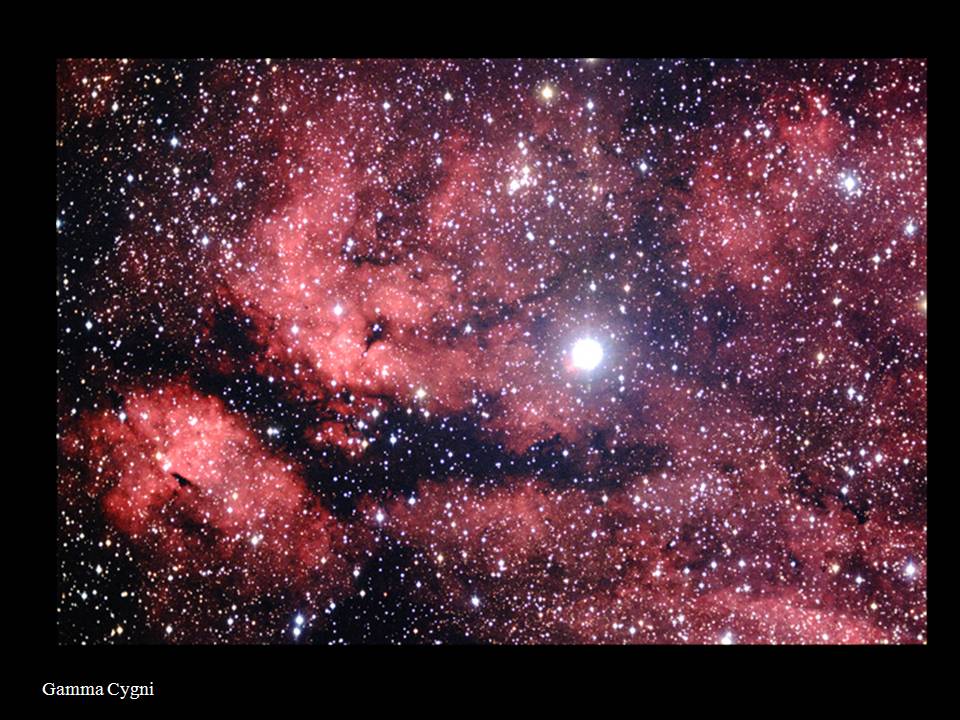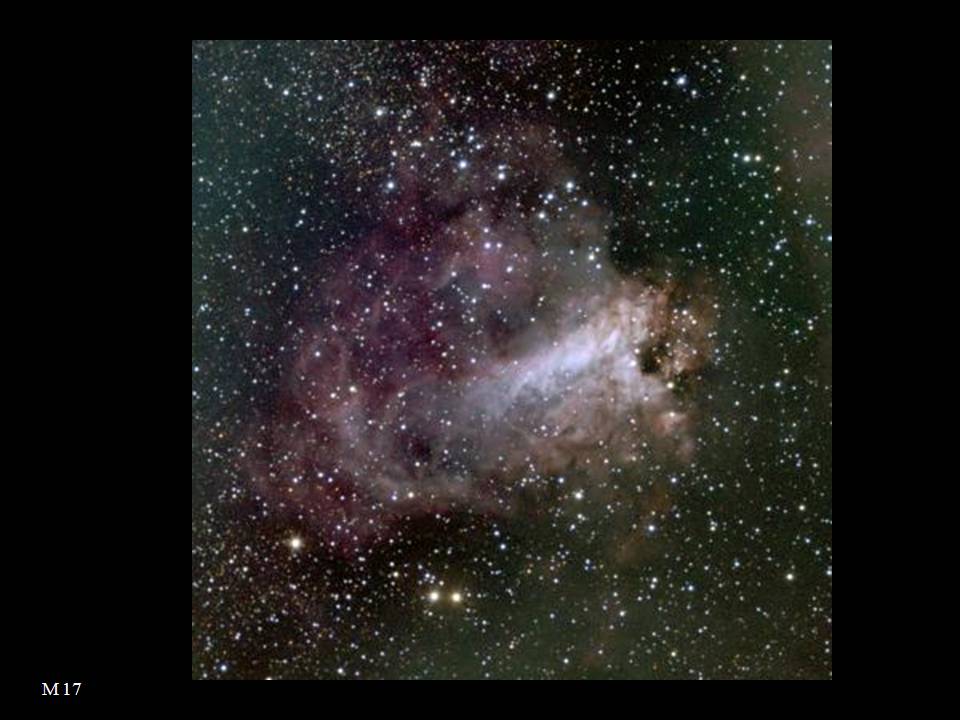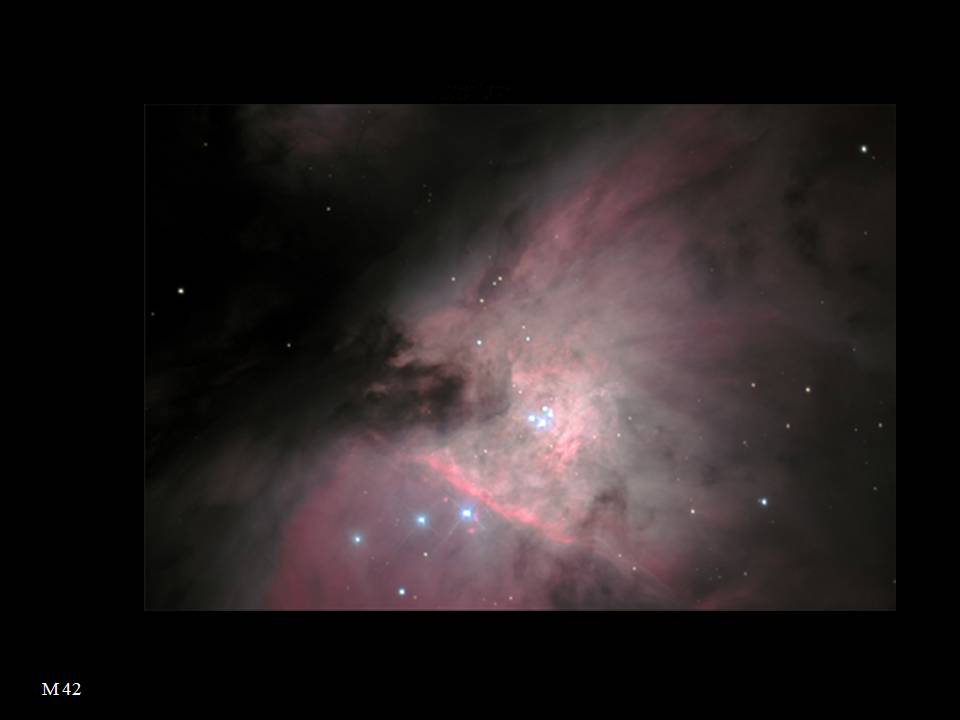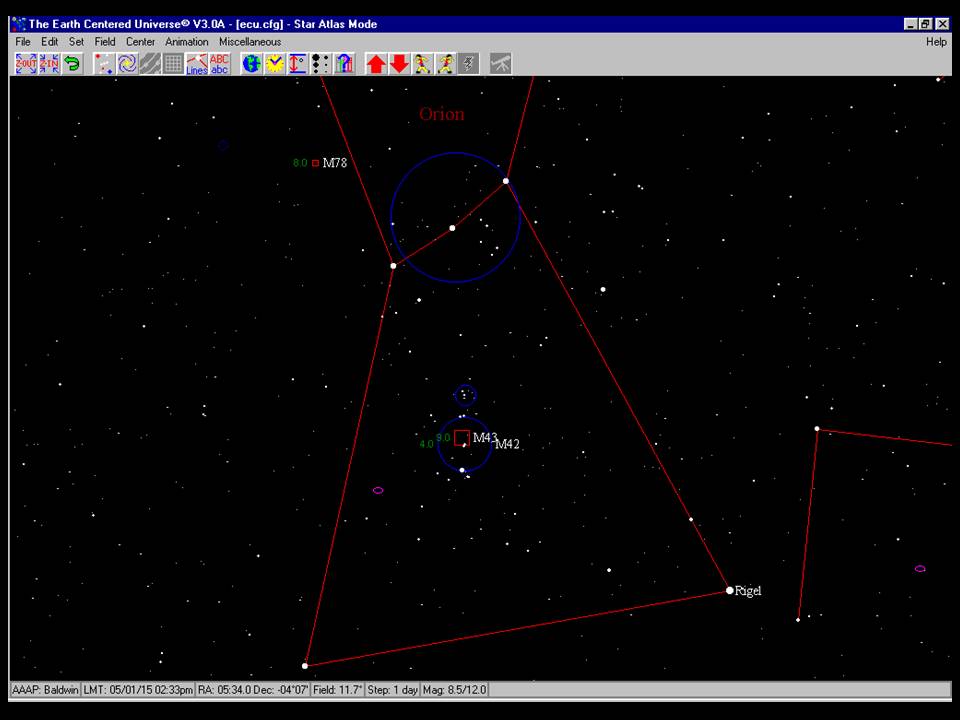
"Observing the Webb Society Gaseous Nebulae"
With volume-two of the Webb Society's Deep-Sky Observers Handbook, it lists a number of bright gas nebula visible with small amateur telescopes.
There are a total of 80 gaseous/diffuse nebula listed in the Webb Society handbook.
Some are easy, some are difficult!
All coordinates are for year 1975.
I have 'sketched' or 'video-captured' all 80 objects from the list.
For detailed descriptions and additional sketches, see the Webb Society handbook, V2 "Planetary and Gaseous Nebulae".
Gaseous/Diffuse Nebula are clouds of interstellar matter, thin but widespread agglomerations of gas and dust.
If they are large and massive enough they are frequently places of star formation, thus generating new associations or clusters of stars.
Some of the stars near nebulae are often very massive and so hot that their high-energy radiation can excite the gas of the nebula to shine; such nebula is called emission nebula.
If the stars are not hot enough, their light is reflected by the dust and can be seen as white or bluish reflection nebula.
Some nebulae are only visible by the absorption of light from objects behind them.
They are distinguished from diffuse nebula mainly because they happen to be not illuminated by embedded or nearby stars.
These are called dark nebula.

How do Gaseous/Diffuse Nebula form?
Nebulae originate from large cosmic primordial clouds of gaseous matter in our Universe, leftover from its formation.
Or they can come from enriched material ejected into interstellar space during the later life stages of the more massive stars in a galaxy.
On cosmic timescales, nebulae undergo rapid changes and have only comparatively short lifetimes, so that those we observe are all young objects.
Nebulae are scattered throughout the universe.
Most of the nebulae that we can visually observe are located within our own Milky-Way galaxy.
But nebulae have also been discovered in other galaxies, and mark areas of starbirth among their spiral arms.

A few examples of Gaseous Nebula:
M17, the 'Swan Nebula'

M17 is located in the summer constellation of Sagittarius, 'The Archer’.
The ‘Swan Nebula’ contains a small cluster of about 35 bright stars imbedded in the nebulosity.
Under favorable conditions, M17 is just visible to the naked eye and easy to find.
It is about 6000 light years distant, and covers an area of about 40 light years in size.
Discovered in 1764.

M42, the 'Great Orion Nebula'

M42 is located in the winter constellation of Orion, 'The Hunter’.
The great ‘Orion Nebula’ is the brightest diffuse nebula in the sky, and spectacular in telescopes of all sizes.
M42 contains a cluster of newly formed stars, called the "Trapezium cluster", which is among the very youngest clusters known, with new stars still forming in this region.
It is very easy to find the Orion Nebula, and can be seen to the naked eye as a faint nebulosity in the middle of the sword of Orion.
M42 is 1500 light years distant, has an apparent diameter of about four times the full moon, corresponding to an actual diameter of about 30 light years.
M42 was the first nebula to be successfully photographed in 1880.
The Orion Nebula was discovered in 1610.

Photo Credits:
M16 - Bill Lofquist/Adam Block/NOAO/AURA/NSF
Gamma Cygni - Teresa Hawes and Philip Darling/Adam Block/NOAO/AURA/NSF
M17 - Adam Block/NOAO/AURA/
M42 - Jim Rada/Adam Block/NOAO/AURA/NSF
Advanced Observing Program: National Optical Astronomy Observatory - Kitt Peak Az http://www.noao.edu/outreach/aop/observers/bestof.html
"Earth Centered Universe" by David Lane http://www.nova-astro.com/
Neat links:
Webb Society
Larry's home webportal
You may E-mail me at:
lsmch@comcast.net
This is it. Hope you enjoyed the visit. Come again soon!

